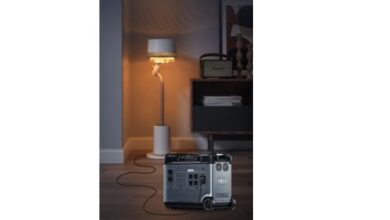What are the Different Types of Thermometers

It can be beneficial to have a reliable temperature checker at home. Knowing whether someone is feverish is crucial information regarding following necessary actions for their care. There it is. Understanding the many types of degree checkers can help you select the proper one. Your family’s age and personal preferences will help determine which type to buy. Knowing the types of thermometers will help you buy the right one.
Digital thermometer
Your body temperature is measured using a thermal sensor and a digital temperature checker. The temperature of the mouth, rectum, or armpit can be detected with these thermometer devices. Be aware that armpit (armpit) temperatures are typically 0.6°C (12 to 1°F) lower than mouth readings when examining digital degree readings. Oral reading is 0.6°C (12 to 1°F) cooler than a rectal reading. You can get an accurate reading from a digital degree checker in approximately a minute.
Ear thermometers
The ear temperature checker is put in the child’s ear. They are quick to take a child’s temperature and are painless, but they are pricey, and the readings might not be accurate if the Celcius checker is not positioned correctly in the ear. Learn how to wear the degree checker in your ear and how long it takes to take a reading by continuing to read.
Medical thermometers
A medical thermometer is employed to gauge body temperature. Mercury Celcius checkers developed in the 20th century make up the majority of temperature checkers nowadays. It has a small area where mercury levels quickly increase and are sensitive and precise. The mercury levels cannot naturally decrease because of the tube’s kinks. As a result of their use in medical offices, these degree checkers are sometimes known as doctor’s meters. It determines a person’s body temperature between 35 and 42 degrees Celsius. Clean the thermometer with alcohol before and after use.
Glass thermometer
These are additionally referred to as mercury in glass thermometers. Mercury is contained in their vitreous bodies. Partially submerged and fully submerged are the two types. But before the findings are shown, there will be a delay. These glass or mercury temperature checkers can take minutes to get the same readings as a digital Celcius checker, which can do in a matter of seconds. Mercury is also a dangerous element; hence its usage in glass thermometers is curtailed.
Strip thermometer made of plastic
These temperature checkers cannot precisely read the body temperature but can identify whether a patient has a fever. They only signal that something might be awry. Apply the strips to your forehead to use them.
Forehead thermometer
The superficial temporal artery, a carotid artery branch, is measured using an infrared sensor on a forehead Celcius checker. Some are known as non-contact infrared thermometers. For use at airports, shops, stadiums, etc., forehead thermometers that don’t require direct touch are very common. The forehead temperature is around 0.6°C (1°F) lower than the mouth. It instantly provides quick reading.
App-based thermometer
Most free mobile temperature measuring apps are made to assess the temperature of an environment rather than a specific individual. Apps for smartphones that aid in measuring body temperature rely on a digital thermometer that is Bluetooth-connected to the app. The rectum, armpit, or mouth can be used to take the temperature. They give readings in 8 to 10 seconds. Some apps allow you to post private temperature readings to weather and health maps. This will assist local governments in being informed of any illness outbreaks in your area. Some apps make healthcare recommendations based on readings. The majority of apps allow you to record multiple users’ temperatures.



